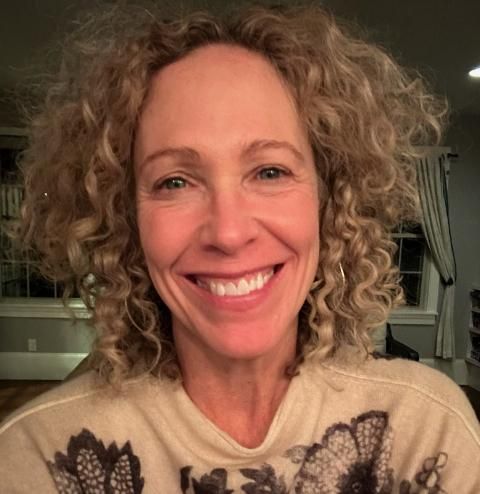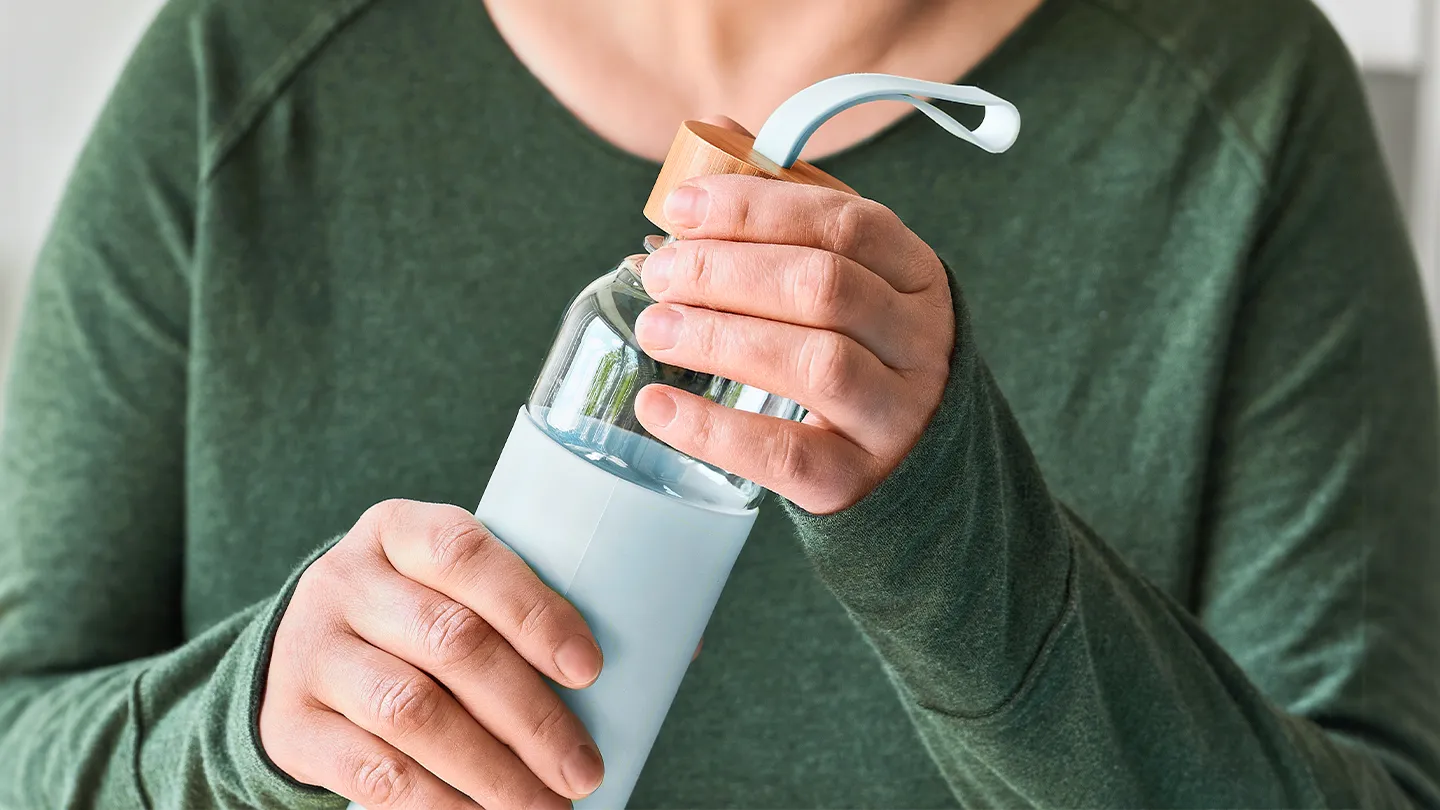Did you know that what you eat accounts for approximately 20 percent of your total daily water intake? That means if you’re on a GLP-1, the reduction in the amount of food you eat may put you at risk for dehydration, especially if there’s also a drop in how much you’re drinking, says Kris Dilley, RDN, a board certified specialist in obesity and weight management and lead dietitian at Outpatient Nutrition Services at The Ohio State University Wexner Medical Center in Columbus. Evidence (from a study conducted on rats) suggests that in addition to curbing appetite, weight loss meds may actually suppress water intake, Dilley says.
Why Hydration Is Important When You’re Taking a GLP-1
Staying hydrated is important to keep your body healthy and working well. Dehydration puts you at risk for short-term blood pressure and heart rate changes or even more serious issues such as urinary tract infections and kidney problems. If you’re on a GLP-1, a lack of fluids can also exacerbate some of the common GI side effects, such as nausea or constipation, says Dilley.
People who are taking weight loss drugs and experiencing other common side effects such as vomiting and diarrhea need to pay particular attention to staying hydrated because they’re at even greater risk of dehydration, says Elisabetta Politi, MPH, RD, a certified diabetes educator at Duke Lifestyle and Weight Management Center in Durham, North Carolina.
Hydration Is Essential to Digestion
Hydration impacts every part of the digestive process for all of us, including people taking a GLP-1, says Dilley. “Good hydration is important to make sure that you have an adequate volume of digestive juices (such as saliva, stomach acid, enzymes) to help food move through and start the process of breaking foods down,” she explains.
Once your food is broken down, water helps transport water-soluble vitamins, minerals, and other nutrients throughout your body, Dilley says. “Finally, in the large intestine, water is needed to make stools softer and easier to pass.” The expert says that not drinking enough fluids can contribute to constipation, and the longer the stool stays in the large intestine, the more opportunity for gas and bloating.
Water Requirements for People on a Weight Loss Drug
Right now, there are no specific guidelines on how much water a person on a GLP-1 needs to drink, says Politi. For the average person, the Institute of Medicine of the National Academies recommends a daily intake of approximately 91 ounces of water for women and 125 for men, and that can be from drinking water and other beverages as well as from food, reports the National Academy of Sciences (NAS).
That’s a general guide, Politi says. Individual needs can vary due to factors such as body size, other medications you take, outdoor temperatures, and exercise, and are best discussed with your dietitian or provider.
Likewise, people with chronic health conditions such as renal disease or cardiac issues should consult with their physician or dietitian for their specific recommendations on fluid intake, says Dilley.
6 Tips for Hydrating When You’re on a GLP-1
If you’re taking a weight loss drug, you may need to pay extra attention to when and what you’re drinking to ensure you’re getting enough fluids throughout the day. Fortunately, there are fun and tasty ways to elevate your hydration game.
Here’s what experts recommend drinking (besides plain water) to stay healthy and hydrated and reduce the potential side effects of weight loss medications.
1. Infuse Water to Add Flavor and Fun
Water is the best fluid for hydration, says Politi. Bonus: Research suggests that people can lose a few pounds each year just by increasing their water intake, Politi adds.
But some people struggle to consume enough water, experts say. When you finding yourself growing weary of water, try adding low-sugar drink mixes or electrolyte powders to mix it up. “It all counts toward your daily goal,” Dilley says.
You can also add fresh herbs or fruit to a pitcher of water to add flavor, Politi says. Play around with different blends, like cucumber and mint or lemon and ginger.
2. Healthy Options for Hydrating
Besides water, other good drink options for people on a GLP-1 include reduced-fat milk or milk alternates, herbal tea, and low-calorie sports drinks with small amounts of electrolytes, such as sodium and potassium, says Politi.
Decaffeinated coffee or unsweetened tea can be another way to mix up the taste of your liquids without adding caffeine or sugar, says Dilley, as is seltzer, though she notes bubbly drinks may cause discomfort to a person experiencing side effects like bloating or constipation. For people on a GLP-1 with bouts of nausea, low-sugar ginger ale or ginger tea may be helpful, she says.
3. Protein and Nutritional Shakes
Protein shakes can contribute to hydration. Politi says they contain about 85 to 95 percent water. Read the label, though, as many also contain quite a lot of sugar and calories, the expert says.
Another concern is that these kinds of shakes are much more filling than plain water or other “thin” liquids and can lead to you eating less than you need to for hours afterward, says Dilley. “A person taking GLP-1s should be careful in their use of these shakes to make sure they are not causing their overall intake of calories to dip too low.” If you like nutritional shakes and you want to drink them to reach your hydration goals, Dilley suggests consuming the shake near the end of the day when you’ve already eaten most of your food and liquids.
4. Eat Fruits and Vegetables
Because the average water content of fruits and vegetables is about 80 percent, and veggies like lettuce and cucumbers can be as much as 96 percent water, eating them contributes to hydration, Politi says. People trying to control their blood glucose may want to eat more veggies than fruit because vegetables are lower in sugar, she adds.
For people just starting on a GLP-1, fruits and vegetables may be difficult to tolerate because of their high fiber content. “These foods may need to be temporarily limited while adjusting to a weight loss drug, especially if the person is experiencing side effects,” Dilley says. Since fruits and vegetables are an excellent source of nutrients and people should go back to eating them — or eating more of them — once they’re adjusted to the medication.
5. Avoid Sugary Drinks
Cut back or eliminate any drinks with added sugars such as sweetened sodas, energy drinks, or regular sports drinks. “These contribute empty calories but little to no nutrients, and may cause issues with blood sugar control,” Dilley says.
6. Watch Your Consumption of Alcohol and Caffeine
You don’t have to swear off alcohol and caffeine, but it’s good to practice moderation in both, says Politi.
Dilley agrees that people on a GLP-1 should be mindful of the amount of alcohol and caffeine they are consuming and pay attention to how your body responds to them. If you experienced any digestive issues such as nausea or loose stools when drinking coffee before you were on a GLP-1, you should probably avoid it while taking a weight loss drug because the drugs cause similar side effects and may result in a “double whammy” of stomach upset, she says.
People taking a weight loss drug may also notice that the effects of alcohol hit them a little harder than in their “pre-GLP-1” days, says Dilley. “Overconsumption of alcohol can lead to nausea, vomiting and/or diarrhea, which can make adequate hydration more of a challenge. Alcohol can also interfere with diabetes management and increase the risk of low blood sugars,” she says. So take it slowly if you do choose to have a drink.
How to Know You’re Getting Enough to Drink
A quick and easy way to check if you are getting enough water overall is to do a color check of your urine. “If you are consuming enough, the urine color will be a pale yellow color. If it is a dark yellow or amber color, you likely need to increase the amount you consume,” Dilley says.
Pay attention to what you drink — and how you drink it. Dilley recommends carrying a drink with you all times, eating and drinking at separate times to avoid feeling overfull (which may lead you to not eat enough food throughout the day) and tracking your hydration. You can use your own method or the premium version of the Lose It! app, which allows for water tracking, to make sure you are hitting your daily fluid targets.
Editorial Sources and Fact Checking
- The Nutrition Source. Water. Harvard T.H. Chan School of Public Health.
- McKay NJ et al. Glucagon-Like Peptide-1 Receptor Agonists Suppress Water Intake Independent of Effects on Food Intake. American Journal of Physiology - Regulatory, Integrative and Comparative Physiology. December 1, 2011.
- Dehydration. Cedars-Sinai.
- Report Sets Dietary Intake Levels for Water, Salt, and Potassium to Maintain Health and Reduce Chronic Disease Risk. National Academy of Sciences. February 11, 2004.
- Vij VA et al. Effect of ‘Water Induced Thermogenesis’ on Body Weight, Body Mass Index and Body Composition of Overweight Subjects. Journal of Clinical and Diagnostic Research. September 2013.
- Gaelickx I et al. Contribution of Water from Food and Fluids to Total Water Intake: Analysis of a French and UK Population Surveys. Nutrients. October 2016.

